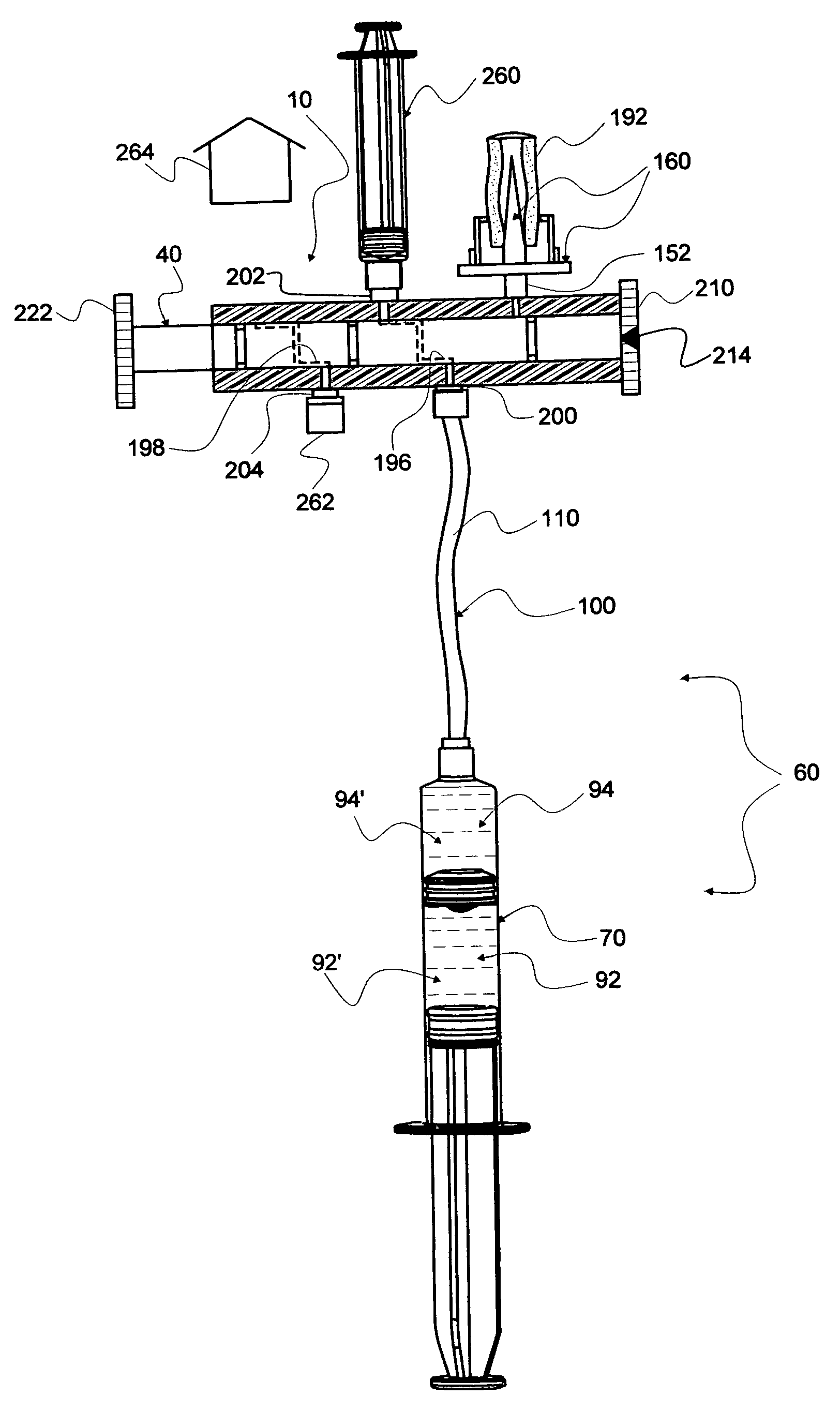Safty dispensing system for hazardous substances
a dispensing system and hazardous substance technology, applied in the field of safe dispensing systems, can solve the problems of insufficient fluid transfer from the vial, exposure to a handling medical technician or other affected person, and the risk of contaminated filters being dangerous to handle, so as to reduce the likelihood of inadvertent release
- Summary
- Abstract
- Description
- Claims
- Application Information
AI Technical Summary
Benefits of technology
Problems solved by technology
Method used
Image
Examples
Embodiment Construction
[0056] In this description, when the term proximal is used relative to a part or the segment of a device, it is a part which is in closer proximity to a user of the device. The term distal refers to a part or segment generally away from the user. Reference is now made to the embodiments illustrated in FIGS. 1-23 wherein like numerals are used to designate like parts throughout.
[0057] A valve assembly 10 is seen in FIG. 1. Valve assembly 10 comprises an outer, hollow, cylindrical housing 20 which has a plurality of externally accessible connecting ports, generally numbered 30. Disposed within the hollow of the housing is a close fitting cylindrical rod 40. Disposed on each end of cylindrical rod 40 is a handle, generally numbered 50, by which rod 40 is captured, rotated and displaced within housing 20.
[0058] A multi-chamber-pre-flush syringe configuration 60 is seen in FIG. 2. A key part of configuration 60 is a multi-chamber syringe 70. Details of design and operational modes of a...
PUM
 Login to View More
Login to View More Abstract
Description
Claims
Application Information
 Login to View More
Login to View More - R&D
- Intellectual Property
- Life Sciences
- Materials
- Tech Scout
- Unparalleled Data Quality
- Higher Quality Content
- 60% Fewer Hallucinations
Browse by: Latest US Patents, China's latest patents, Technical Efficacy Thesaurus, Application Domain, Technology Topic, Popular Technical Reports.
© 2025 PatSnap. All rights reserved.Legal|Privacy policy|Modern Slavery Act Transparency Statement|Sitemap|About US| Contact US: help@patsnap.com



